Having flourished under the Nguyen Dynasty (1802-1945), Nha Nhac, an elegant and sacred musical form often performed during solemn court ceremonies, and ceremonies to worship gods and ancestors, became an indispensable form of court music of the dynasty at that time.
Nowadays, Hue Royal Court Music is still the top choice for tourists. Listening to Royal Court Music in the Hue Imperial City, feeling the silence of the space here, along with the dim light, with the ancient melodies, takes the listener into the past in thoughts about the Nguyen Dynasty, a dynasty that knew how to inherit the royal court music tradition of previous dynasties, developing more brilliantly and richly in terms of themes, genres and quantity.

.
Vietnamese royal music through 1,000 years of formation and development
According to researchers, royal court music was born from the establishment of the Vietnamese monarchy. From the Ly dynasty (1010-1225), royal court music was shaped and then developed through the Tran dynasty (1225-1400), Ho dynasty (1400-1407), Le dynasty (1427-1788), Tay Son dynasty (1889-1801) and especially flourished under the Nguyen dynasty.
Royal court music symbolizes the monarchy, the longevity and prosperity of the dynasty. For this reason, Royal music was highly regarded by Vietnamese monarchies.

During the Ly Dynasty, the Royal Court Music was born and began to be organized. The Royal Music of this period had elegant lyrics and noble rhythms, symbolizing the longevity, prosperity and power of the feudal monarchy.
During the Le Dynasty, Royal Court Music was a music genre reserved for the aristocracy and scholars. This music genre had a complex, tight structure with a clear, detailed organization.
Since the Le dynasty, Nha Nhac was divided into many separate genres such as Giao Nhac, Dai Trieu Nhac, Mieu Nhac, Dai Banquet Nhac, Thuong Trieu Nhac, Cuu Nhat Nguyet Lai Trung Nhac...
However, at the end of the Le Dynasty, Nha Nhac could no longer maintain its development and began to decline and fade due to many different reasons.
After weakening since the end of the Le Dynasty, Hue Royal Court Music developed strongly again and was systematically organized during the Nguyen Dynasty (1802-1945). Especially in the first half of the 19th century, the Gia Long Dynasty knew how to use this scholarly music genre to "nourish the spirit" when it first established its career in the South.
From here, Nha Nhac was closely associated with the Hue royal court and developed according to a standard, systematic, methodical model with hundreds of musical chapters. This period was also an important preparation step, creating the premise for the development of royal court music through the following kings.
The Nguyen Dynasty introduced music into the "education" of customs. The Nguyen Dynasty's court music is truly a typical example of Vietnamese classical music. The Nguyen Dynasty kings continued the tradition of regularly organizing court concerts.
During the Nguyen Dynasty, royal court music was used in the ceremonies of the Great Dynasty (once every two months), the Regular Dynasty (once every four months), the Nam Giao and Tich Dien ceremonies, the king's and queen's birthdays, the coronation ceremony, the king's and queen's funerals, and the reception of ambassadors...
During the reign of King Thanh Thai, the Nha Nhac troupe consisted of 120 people, and later recruited 20 more children. During the reign of King Khai Dinh, 30 more children were recruited into the Nha Nhac troupe. Nha Nhac had such an important position that those who had worked in Nha Nhac for a long time and had experience in the profession would be awarded titles and titles by the royal court.

Hue is a land of cultural heritage. (Source: Vietnam+)
To enhance the style and etiquette of the court, the Nguyen Dynasty established the Great Music Band for use in grand ceremonies and the Small Music Band for use in entertainment, singing and dancing. This was the royal music reserved for the court, which we call royal court music.
The kings and nobles under the Nguyen Dynasty also often organized private Nha Nhac sessions to enjoy together. They invited musicians from the court's Tieu Nhac band to their homes to play and perform with the singers.
It is a form of chamber music, an elegant way of enjoying music similar to the Ca Tru style in the North. This enjoyment was initially limited to the royal palace or the royal family, but gradually became popular among the masses.
There is one special thing: if Ca Tru originated from the folk, then spread to the royal court, and was the favorite music form of the Northern Confucian scholars; then Nha Nhac originated from the royal court and spread to the folk.
The concentration of the Nguyen Dynasty monarchy gathered all the most talented musicians and instrumentalists. To suit the content of each ceremony, the Ministry of Rites and the Academy compiled musical chapters, such as in the Te Giao ceremony, there are 10 musical chapters with the word Thanh (stating the success), in the Xa Tac ceremony, there are 7 musical chapters with the word Phong (good harvest), the Te Mieu ceremony has 9 musical chapters with the word Hoa (harmony)...
After the Nguyen Dynasty ended (1945), Nha Nhac also lost its original social function and performance environment, fell into a state of decline and was at risk of being lost.
However, immediately after Nha Nhac was recognized by UNESCO as a Masterpiece of the Oral and Intangible Heritage of Humanity on November 7, 2003 (since 2008 called Representative Intangible Cultural Heritage of Humanity), Vietnam had a national action program to preserve, restore and promote the value of Nha Nhac.
Nowadays, Hue royal court music with forms such as orchestra, songs, pieces, dances is performed on many occasions such as Hue Festival, Buddhist festivals, folk festivals, chamber music...
Nha Nhac is also performed in diplomatic ceremonies, for tourists and locals during major festivals and traditional New Year's Eve... Therefore, Nha Nhac today still has rich conditions and spaces for performance. Its artistic value is still preserved, preserved and continues to be promoted.


.
Discover the art of Hue Royal Court Music
Unlike other genres of Vietnamese music, Royal Court Music is the only music genre with national character.
Hue royal court music currently exists in three forms including Dai Nhac, Tieu Nhac and Royal Court Dance.
- The Great Music Orchestra: This is a very important orchestra in the Hue Royal Court Music system, performing the most important forms in ceremonies, with a large volume, the main instruments are drums and trumpets. The Great Music Orchestra is often used in ceremonies such as Nam Giao and Mieu ceremonies...
Compared to the Grand Orchestra described in the data, the current orchestra has a more compact structure. The structure of the Grand Orchestra includes Percussion (big drum, war drum, bong drum, mandolin or cymbal, buffalo horn, rice drum); Wind (trumpet); String (erhu).
- Small Music Orchestra: Compared to the Grand Music Orchestra, the music of the Small Music Orchestra is relatively stable. The music has an elegant, cheerful color, often used in royal banquets, grand celebrations, and Lunar New Year. The material is easy to get into people's hearts, not too solemn or sad like the songs of the Grand Music Orchestra, the volume is not too loud.
The musical instrument structure of the Small Music Orchestra includes Percussion (drum, zither, flute, clapper); Wind Instrument (flute); String Instrument (moon lute, pipa, three-stringed lute, two-stringed fiddle).
- Royal dance: Nguyen Dynasty's royal dance absorbed the dances from the royal court and folk dances of previous dynasties, improving and creating new dances with the characteristics of Nguyen Dynasty's performing arts. Nguyen Dynasty's royal dance was mainly group dance, thematic ideas were often expressed in moving formations and ended with a still formation. Some prominent royal dances were Bat Dat dance, Luc Cung Hoa Dang dance, and Lion and Mother dance.
“
Unlike other genres of Vietnamese music, Royal Court Music is the only music genre with national character.
Vietnamese royal music has a very rich system of repertoire, just the music system alone has hundreds of pieces, not to mention the instrumental pieces for Small Music, Large Music and Classical Music...
Musical instruments have different scales, sometimes elegant, clear, sometimes dull, sharp, sometimes slow, sometimes rapid, sometimes leisurely, sometimes bustling, sometimes pensive...
In particular, all of Vietnam's most valuable musical instruments and instruments are present in the Nguyen Dynasty's royal orchestra, associated with rich rhythms and pieces with profound content.
The regulations on orchestra size, performance methods, and content of Nha Nhac are all very strict, reflecting discipline through very high aesthetic institutions, capable of reflecting the ideology and philosophical concepts of the contemporary monarchy.
Royal orchestras are often large in scale and have a rich variety of types, including wind instruments (flute, trumpet, etc.); string instruments (erhu, moon-shaped lute, pipa, three-stringed lute, etc.); vibrating membrane instruments (war drums, clappers, big drums, bong drums, etc.); and instrumental instruments (bells, cymbals, rattles, horn clappers, sinh tien, tam am la, clappers, etc.).

The peaceful beauty of Hue. (Source: Vietnam+)
All of the above musical instruments demonstrate the musical virtuosity, craftsmanship, and fine arts of ancient Vietnamese musicians and craftsmen.
Nha Nhac not only contains a musical system based on the pentatonic scale, but also includes the art of performance. Talking about Nha Nhac is talking about the technique of performing instrumental music, in which each instrument applies a certain level of technical virtuosity.
With string instruments, techniques such as vibrato, stroking, tapping, pressing, and rubbing are applied as principles to create the beauty of the melody.
With the trumpet, an instrument in the Grand Music system, breath-taking is the most delicate technique that requires the musician to practice diligently, especially practicing to have deep breathing...
The performers of Nha Nhac are also trained meticulously and strictly. During the performance, the musicians must pay attention to each other, especially to the drum signals to enter and exit the bow rhythmically and in harmony.

Performing Royal Court Music at the Imperial Citadel, Hue. (Photo: Quoc Viet/VNA)
Nha Nhac not only had a great influence on many other music forms in the region such as Hue singing, Tuong music, and royal court dance music, but also transcended its birthplace, spreading to the South, contributing to the birth of new performing art forms such as Don Ca Tai Tu and Cai Luong.
Along with musical instruments, dances and lyrics (singing) are also performed in a rich variety, containing scholarly content. These values have created a style for royal court music that is different from other types of music in Vietnam and the world.
Hue Royal Court Music is widely circulated in people's lives with many forms of performance in festivals, traditional rituals, and music programs. Solemn yet close and rustic, Vietnamese Royal Court Music is loved and circulated from century to century.


"Six flower lantern offerings" dance. (Photo: Thanh Ha/VNA)
.jpg)
"Six offerings of flower lanterns" dance. (Photo: Nhat Anh/VNA)

The dance "Luc cung hoa dang" performed by students of Nguyen Hue High School - Hue. (Photo: Quoc Viet/ VNA)

"Vu Phien" dance. (Photo: The Duyet/VNA)

Dance "Lion mother emerges from the unicorn child". (Photo: The Duyet/VNA)

The dance "Luc cung hoa dang" performed by students of Nguyen Hue High School - Hue. (Photo: Quoc Viet/ VNA)

"Six offerings of flower lanterns" dance. (Photo: Nhat Anh/VNA)

"Six offerings of flower lanterns" dance. (Photo: Nhat Anh/VNA)

"Vu Phien" dance. (Photo: The Duyet/VNA)

Dance "Lion mother emerges from the unicorn child". (Photo: The Duyet/VNA)

.
Preserving and bringing Royal Music to contemporary audiences
Hue Royal Court Music can be considered a priceless asset of the Vietnamese people. Since 1992, the work of preserving Hue Royal Court Music has been carried out, and Vietnamese Royal Court Music has gradually become known to the world.
In March 1994, UNESCO organized an International Conference of Experts on Intangible Cultural Heritage in Hue. In a meeting of the art subcommittee, Professor Tran Van Khe, together with Vietnamese professors Tran Quoc Vuong and To Ngoc Thanh, Japanese professors Tokumaru and Yamaguti, and Filipino professor Jose Marceda, submitted to UNESCO and the Vietnamese Government a national program to restore and research Hue Royal Court Music.

Dragon boats serve tourists on the Perfume River. (Source: Vietnam+)
On that basis, the Ministry of Culture and Information and Thua Thien-Hue province assigned the Hue Monuments Conservation Center to prepare a national candidacy dossier for Hue Royal Court Music - Vietnamese Court Music to submit to UNESCO for recognition as a Masterpiece of the World's Intangible and Oral Heritage (2002).
Since 1995, Hue Royal Court Music has been performed at the World Culture House in France and many other countries in Europe. A CD of Hue Royal Court Music has been released by the World Culture House under the artistic direction of composer Ton That Tiet and Professor, Doctor Tran Van Khe.
On November 7, 2003, Hue Royal Court Music was recognized by UNESCO as a Masterpiece of the Oral and Intangible Heritage of Humanity (since 2008, it has been called Representative Intangible Cultural Heritage of Humanity). According to UNESCO's assessment, among the traditional music genres in Vietnam, Royal Court Music has reached national stature.

Over the past 16 years, the Hue Monuments Conservation Center has collected, researched and preserved 10 musical pieces from the Giao Te ceremony, 9 musical pieces from the Temple Te ceremony, 5 musical pieces from the Doan Duong, Van Tho and Tet Nguyen Dan ceremonies, 40 musical pieces performed with the Tieu Nhac troupe, 14 trumpet musical pieces used in the Dai Nhac, and 10 musical pieces performed when the King is present.
Within the framework of the project "Preserving and promoting the values of Hue Royal Court Music", traditional vocational training for Royal Court Music musicians has been effectively implemented.
The project also conducts research, collects, archives and restores typical Nha Nhac pieces such as Thai Binh ancient music, Thai songs in the Nam Giao ceremony; transcribes Nha Nhac pieces; and profiles typical artisans who are "living human treasures."





Artisan Lu Huu Thi - The person who contributed to preserving and maintaining Hue royal court music
Artisan Lu Huu Thi (104 years old) at 200 Dang Tat, Huong Vinh ward, Hue city, is currently considered a "living human treasure" of Hue royal music.
As the last member of the Hoa Thanh music group, under the reign of King Bao Dai, now at the age of 104, with more than 80 years of experience in the Royal Music profession, he is still passionately teaching his craft.
What makes him most satisfied now is being able to pass on his skills to the next generation of musicians at the Hue Traditional Arts Theater (under the Hue Monuments Conservation Center).
During more than 80 years of practicing Nha Nhac, what makes him most satisfied is passing on the skills of the erhu and the trumpet to the next generations, contributing to preserving and maintaining the traditional Nha Nhac values of the nation.
(Photo: Quoc Viet/VNA)
Professor Tran Van Khe - the man who fanned the flames of passion for folk music
Professor Tran Van Khe has made many contributions in submitting Hue Royal Court Music (Vietnamese Court Music) to UNESCO for recognition as a masterpiece of the Oral and Intangible Heritage of Humanity.
During the time of preparing the dossier, despite his old age and poor health, the professor still regularly returned to Vietnam to work with the dossier team members of the Hue Monuments Conservation Center and other consultants to review and adjust the content and necessary documents, and supplement them in a timely manner according to UNESCO's requirements, contributing to the success of the dossier.
As a result, in November 2003, Hue Royal Court Music - Vietnamese Court Music was honored by UNESCO as a Masterpiece of the World's Oral and Intangible Cultural Heritage (since 2008, UNESCO has merged it into the title of Representative Intangible Cultural Heritage of Humanity).
With his witty yet erudite way of speaking, his ability to play many different traditional musical instruments to illustrate his introduction, and his ability to express himself directly in English and French, Professor Tran Van Khe has fanned the flames of passion for folk music as well as Hue Royal Court Music to a wide audience at home and abroad.
(Photo: Duy Khuong/VNA)
Duyet Thi Duong Ancient Theatre
When visiting the Hue Imperial City area (Hue city, Thua Thien-Hue province), tourists can not only explore the beauty of the palaces covered by time but also enjoy Royal Court Music at Duyet Thi Duong Theater.
Duyet Thi Duong ancient theater was built in 1826 under the reign of King Minh Mang. This is the royal theater, a place for the king and royal family to enjoy traditional art forms, especially court art and classical opera.
This is also a place to perform art to entertain foreign ambassadors, to introduce intangible cultural heritage values including royal music, royal dance and royal Tuong.
Duyet Thi Duong Theater was restored and put into use, but it inherited history, continued to exploit and restore typical works that were at risk of being lost, especially Hue Royal Court Music to bring Hue Royal Court Music, a type of royal court music, to the public.
Currently, the Hue Monuments Conservation Center is developing many performances of Royal Court Music to become a unique tourism product to introduce to visitors.
(Photo: Minh Duc/VNA)
Bringing Hue royal court music to the public
The preservation of Hue Royal Court Music in recent times has focused in the right direction on main contents such as research, collection and storage of documents; vocational training and teaching, restoration of typical Royal Court Music; restoration of costumes, and promotional activities to promote the value of Hue Royal Court Music.
In the effort to preserve the intangible cultural values and oral traditions of humanity for Hue Royal Court Music, there is a remarkable contribution from international organizations such as UNESCO, Korea, Japan...
The greatest success of the work of preserving and promoting the value of Hue Royal Court Music (Vietnamese Royal Court Music) is bringing Hue Royal Court Music, from a type of music that only served the royal palace in the past, to the public, in line with the trend of integration and development.
In photo: Hue Royal Court Music performance for tourists visiting Tu Duc Tomb. (Photo: Quoc Viet/VNA)

In particular, the Hue Monuments Conservation Center also cooperated with researcher Trinh Bach to restore Hue Royal Court Music costumes including 15 Dai Nhac costumes, 15 Tieu Nhac costumes, 64 Giao Linh Bat Dat Van costumes, 64 Tran Thu Bat Dat Vo costumes...
Not only preserving the values of royal court music, in recent years, the Hue Monuments Conservation Center has also promoted royal court music to domestic and foreign audiences, making this type of music widely circulated through regular performances.

Performing royal music for tourists. (Source: Vietnam+)
In 2004, at the 3rd Hue Festival, many stages organized to perform Hue Royal Music and all achieved success. Since 2005, this art form has begun to be promoted and exploited thoroughly, attracting the attention of tourists to the ancient capital of Hue.
At the Hue Festivals of 2004, 2006, 2008, Hue Royal Court Music performed the Nam Giao Altar Ceremony, Xa Tac Altar Ceremony, Truyen Lo Ceremony, Martial Doctorate Examination Ceremony, Quang Trung Emperor's coronation ceremony... Hue Royal Court Music was also performed regularly at Duyet Thi Duong Theater (Hue Imperial City) and Minh Khiem Duong Theater (Tu Duc Tomb).
In general, the performance time of Nha Nhac is often associated with major festivals and ceremonies. Regular performances are held at Duyet Thi Duong (Imperial Palace) and Minh Khiem Duong (Tu Duc Tomb), but mainly at Duyet Thi Duong.
Duyet Thi Duong Theater (built 200 years ago) was restored and put into use, but it has inherited history, continued to exploit and restore typical works that were at risk of being lost, especially Hue Royal Court Music to bring Hue Royal Court Music, a type of royal court music, to the public.

Restaurants serving tourists in the evening. (Source: Vietnam+)
Many acts were staged and performed by Duyet Thi Duong Theater such as Thai Binh drum, Tam luan cuu chuyen (grand music); Phu luc dich, Kim tien (small music); Vu phien, Luc cung hoa dang (dance) and many excerpts from ancient plays such as Ky Lan Anh, On Dinh chom Ta.
A special highlight in attracting tourists to enjoy Hue Royal Music is that Hue Royal Music performances take place in a variety of places, outdoors, in palaces, temples and in the Duyet Thi Duong Royal Theatre.
Thus, visitors can approach Nha Nhac at different levels. During the tour of the royal palace, they can stop for a few minutes at Ngo Mon or The Mieu to see what Nha Nhac is. If they want to know more about Nha Nhac, they can watch a performance lasting about 30 minutes in Duyet Thi Duong Royal Theatre. Here, visitors have the time and conditions to be introduced more deeply and thoroughly to the artistic value of Hue Nha Nhac.
In addition, visitors can also buy tickets to board a dragon boat, cruise along the poetic Huong River and enjoy Royal Court Music and other musical genres./.

Source: https://mega.vietnamplus.vn/nha-nhac-cung-dinh-hue-kiet-tac-am-nhac-bac-hoc-va-tao-nha-5350.html





![[Photo] Cat Ba - Green island paradise](/_next/image?url=https%3A%2F%2Fvphoto.vietnam.vn%2Fthumb%2F1200x675%2Fvietnam%2Fresource%2FIMAGE%2F2025%2F12%2F04%2F1764821844074_ndo_br_1-dcbthienduongxanh638-jpg.webp&w=3840&q=75)





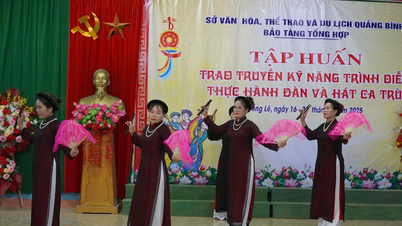

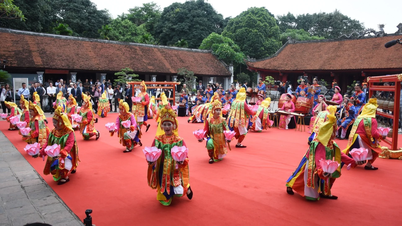

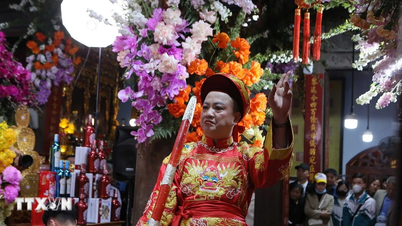

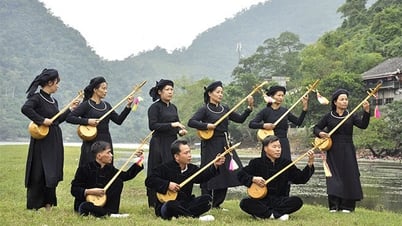

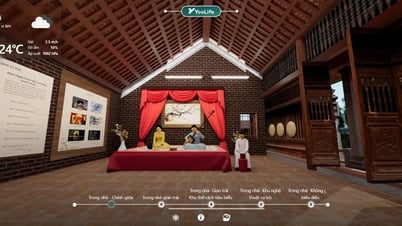

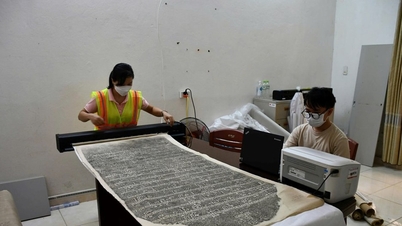



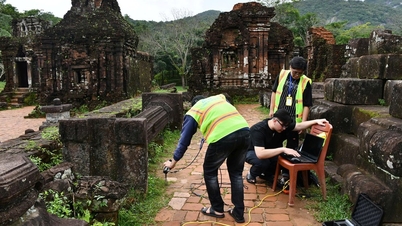

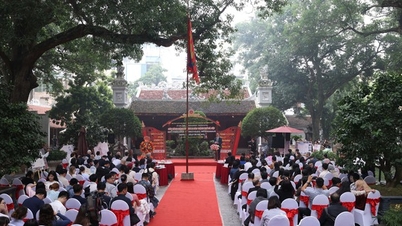









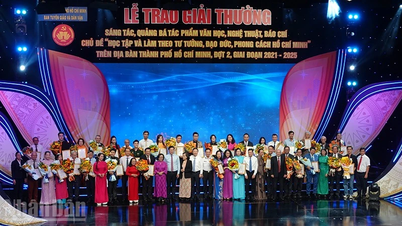

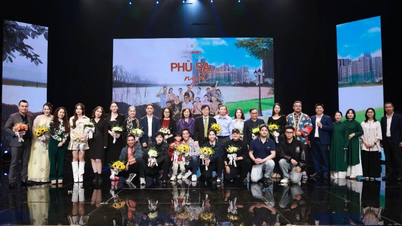
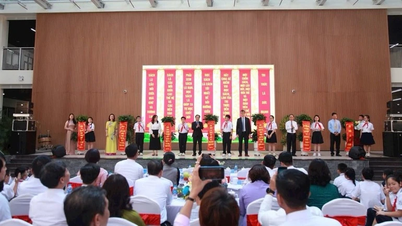
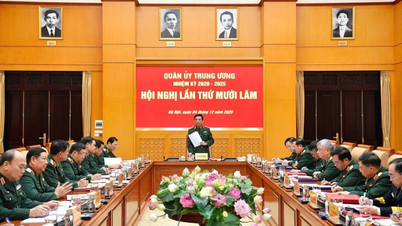

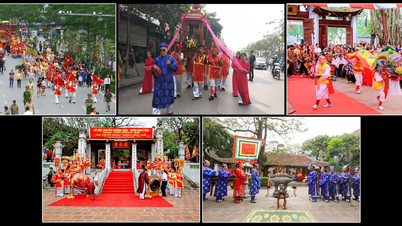


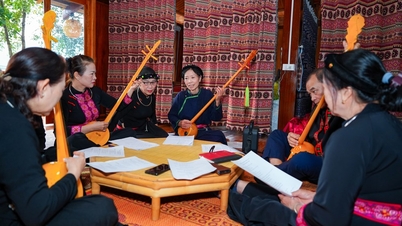




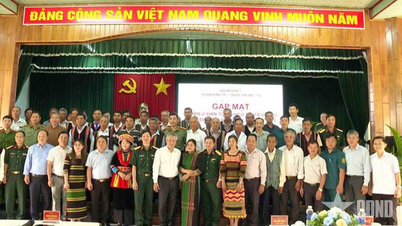



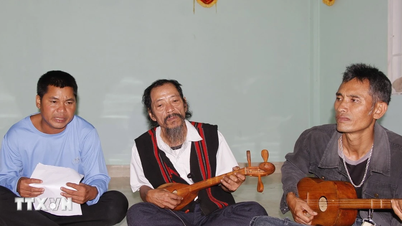
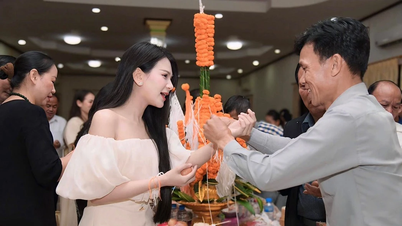


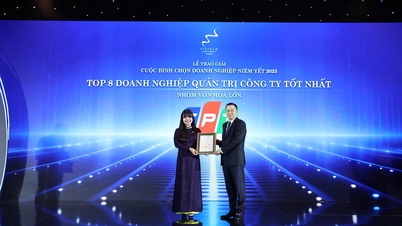



![[VIMC 40 days of lightning speed] Da Nang Port: Unity - Lightning speed - Breakthrough to the finish line](https://vphoto.vietnam.vn/thumb/402x226/vietnam/resource/IMAGE/2025/12/04/1764833540882_cdn_4-12-25.jpeg)
















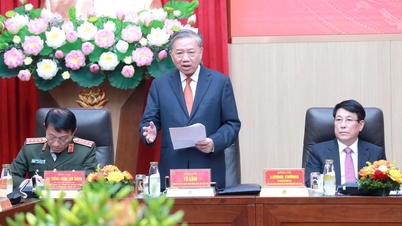

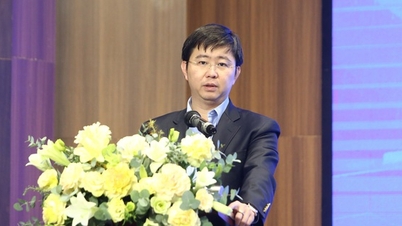












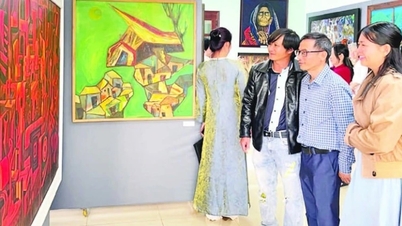
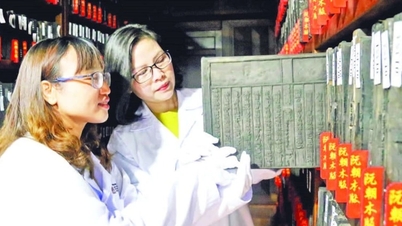









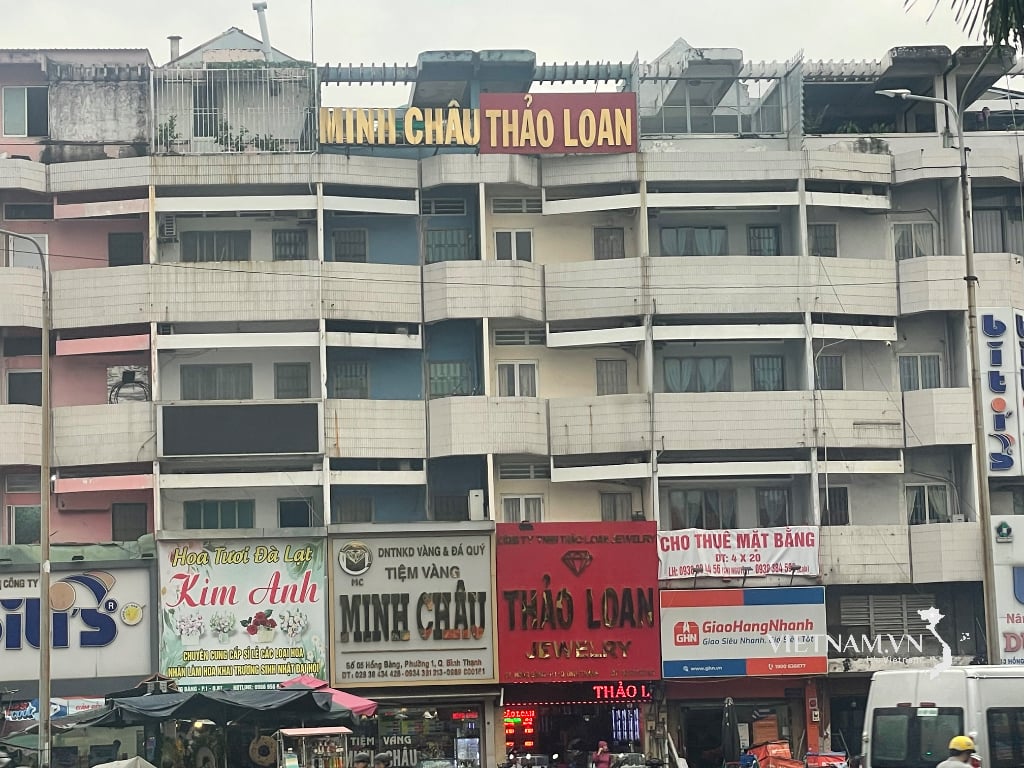



Comment (0)